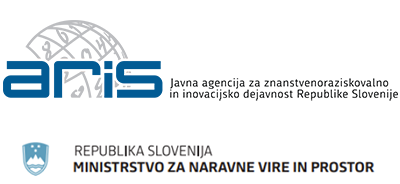NIB
The purpose of the investment project BTH-NIB is the assurance of the appropriate infrastructural conditions for the use of research and developmental opportunities in the fields of operation of the NIB.
Play Video About project Publication
Establishing a Next-Generation Biomonitoring Program for the Surveillance of Aphanomyces astaci, the Causative Agent of Crayfish Plague, and Invasive Crayfish
Project coordinator: Dr. David Stanković
Code: CRP V1-2526
Duration: 1.9.2025 - 31.8.2028
Project funding: Slovenian Research and Innovation Agency & Ministry of Natural Resources and Spatial Planning
The research project eRAKI aims to establish a next-generation biomonitoring program for the surveillance of Aphanomyces astaci — the pathogen causing crayfish plague — and invasive crayfish species in Slovenia. Native crayfish (Astacus astacus, Austropotamobius torrentium, and A. pallipes) are suffering severe population declines due to habitat degradation, pollution, invasive alien crayfish, and the spread of crayfish plague. A. torrentium and A. pallipes are listed under Annex II and V of the EU Habitats Directive, requiring Slovenia to ensure their favorable conservation status.
Recent monitoring has revealed local extinctions, while invasive species (Pacifastacus leniusculus, Faxonius limosus, Procambarus clarkii, etc.) threaten native crayfish both as competitors and as carriers of A. astaci.
eRAKI will develop and implement standardized, high-throughput environmental DNA (eDNA) methods for the early detection and genotyping of A. astaci and the identification of invasive crayfish. The project’s main objectives are to:
- Establish eDNA-based protocols for detecting A. astaci, with strict quality assurance standards.
- Develop a genotyping system to identify virulent A. astaci strains.
- Conduct a nationwide survey of A. astaci prevalence and genotypes.
- Design a monitoring and response framework for crayfish plague detection in native populations.
- Implement eDNA-based tools for invasive crayfish surveillance, including qPCR assays and metabarcoding approaches.
The project will enhance early detection, outbreak management, and conservation responses, reducing ecological and economic impacts of crayfish plague and biological invasions.


 Scope of NIB's accreditation is given in the Annex to the accreditation certificate and in the List of accredited methods for detection of GMOs and microorganisms – plant pathogens
Scope of NIB's accreditation is given in the Annex to the accreditation certificate and in the List of accredited methods for detection of GMOs and microorganisms – plant pathogens 
